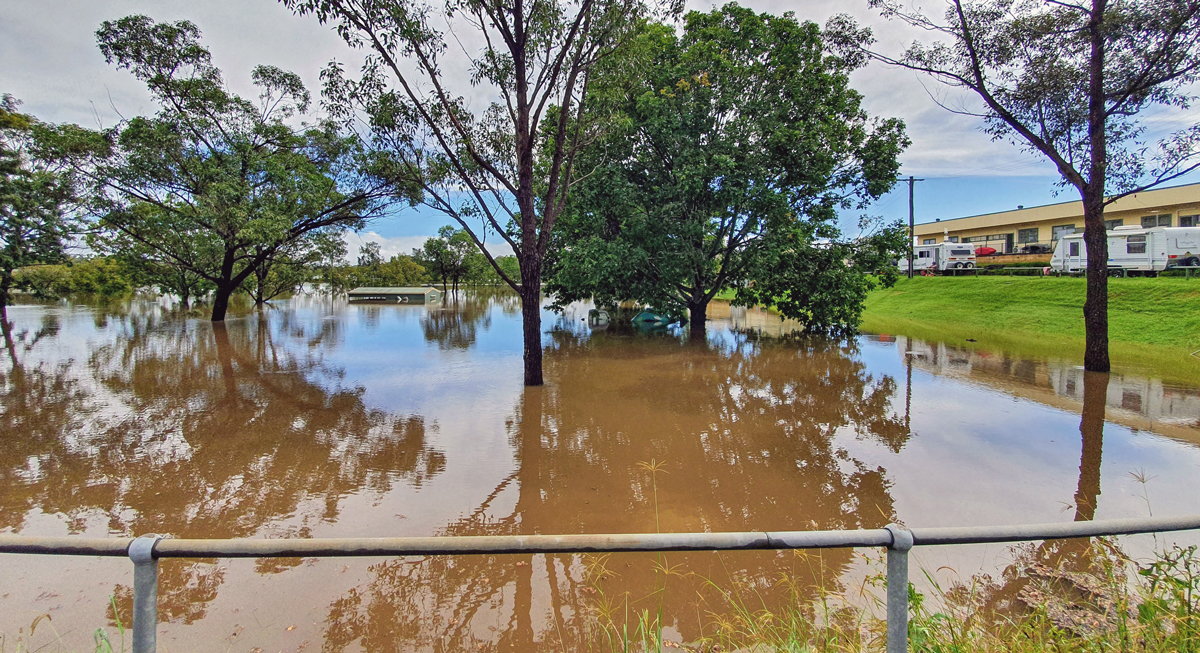Damage, loss and abandonment
24/08/2021
By Emma McGuire, Tenant Advocate, Mid Coast Tenants Advice & Advocacy Service


A number of land lease communities were impacted by the floods in the Mid North Coast in March 2021. Some homes in those communities were significantly damaged by flood waters, leaving home owners unable to sell their homes to incoming prospective purchasers.
In an overwhelming majority of cases, a home owner’s site agreement is terminated following the sale of the home after possession is given over to the purchaser. The Residential (Land Lease) Communities Act 2013 reflects the importance of the home owner’s right to sell by providing strong rights to sell the home on-site and a prohibition against operators interfering with the sale of a home.
Due to the fragile nature of many homes and the expense involved in moving them (along with the difficulties in finding vacant sites on which the home could be installed), home owners place a significant reliance on being able to sell their home on-site as a means of recouping (or growing) their financial investment in their home, and also as a means of bringing their site agreement to an end.
There are a variety of circumstances, however, where a home owner is not able to sell their home and as a result can face limited and difficult options regarding how to end their site agreement and what to do with their home. Homes which are significantly damaged or dilapidated or otherwise unsellable for some other reason can cause significant stress and hardship for home owners. We have seen these types of issues arise most recently in relation to the March 2021 floods across the Mid North Coast, where a number of land lease communities were impacted by the natural disaster. Some homes in those communities were significantly damaged by flood waters, leaving home owners unable to sell their homes to incoming prospective purchasers (home owners) as would ordinarily occur. In some of these situations the only practical choice for home owners may be to either sell to the operator for what would likely be a nominal amount, or alternatively simply abandon their home on the site and leave the community.
Homes that are abandoned (which is something the Tribunal can determine under s 142 of the Act) are now required to be dealt with in accordance with the Uncollected Goods Act 1995. The rights and obligations of the operator in dealing with and disposing of homes under that Act will vary depending on the value of the home itself. For example, a home worth more than $20,000 can only be dealt with in accordance with an order of the Tribunal, whereas a home worth equal to or more than $1,000 but less than $20,000 can be disposed of by the operator by way of public auction or private sale without an order from the Tribunal.
We have seen cases where the Tribunal has made an order authorising an operator to demolish and remove the home of a home owner who was held to have abandoned their ageing home on the site, with the operator permitted to recover the costs associated with the demolition and removal from the home owner (the home owner in that case did not attend Tribunal and the matter was heard in their absence.) In a contrasting matter, one which demonstrates a sympathetic and more collaborative approach, one operator, in consultation with the home owner, covered all of the costs associated with the demolition and disposal of a dilapidated home which it was agreed could not be sold and in circumstances where the home owner was unable to return to the home for health reasons. That approach resulted in arguably the best outcome for all parties involved.
Issues around damaged and dilapidated homes, abandonment & termination of site agreements can be complex. As such, it is important for home owners to seek advice from their local Tenants Advice & Advocacy Service should these matters arise.
This article was published in Outasite magazine issue 7. Outasite is published annually. Outasite Lite email newsletter, is sent several times a year – subscribe here. All past issues are available in the archive.
